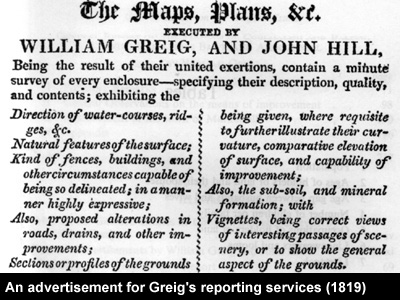
The nineteenth century was one of contrast for the town and district of Markethill. Following the 1800 Act of Union, the land was relatively peaceful allowing for economic expansion. Nowhere was this more evident than in the textile industry. The citizens of the town of Markethill and the surrounding locality had been involved in the manufacture of cotton and linen products for many years. In the first half of the nineteenth century, it remained very much a cottage industry with the flax grown on family land, harvested by the family, and spun into yarn within the home.
William Greig published his report in 1821 into the financial workings of the Gosford Estates in County Armagh. Of the occupations listed, eighty eight per cent were related in some manner to the manufacture of linen. He also discovered that quite a number of the other tenants were employed by the cotton spinning works of William Atkinson at Glenanne, established at the beginning of the century. Still more found employment in the scutching mills established along the banks of the River Cusher. Reduced infant mortality rates meant there were more adult family members to be supported and this led to the subdivision of land rendering the farms smaller in size with each succeeding generation.
The Atkinson mill was established in 1818 as a cotton spinning and weaving factory. It was acquired in 1841 by George Gray who, fifteen years later, adapted it to the purpose of linen manufacture and continued to employ many local residents. The linen market at Armagh was considered to be one of the largest in Ireland, with an annual turnover of three hundred and sixty thousand pounds.
Linen continued to be the largest employer, outside of agriculture, throughout the latter half of the nineteenth century. In 1888, D. H. Sinton established another linen factory at the bottom of the hill in Markethill. This concern flourished and provided much needed employment at a time when the Gosford estate was in decline as a working establishment. The factory was purchased by Spence Bryson of Portadown in 1909 and continued to flourish throughout the twentieth century.
